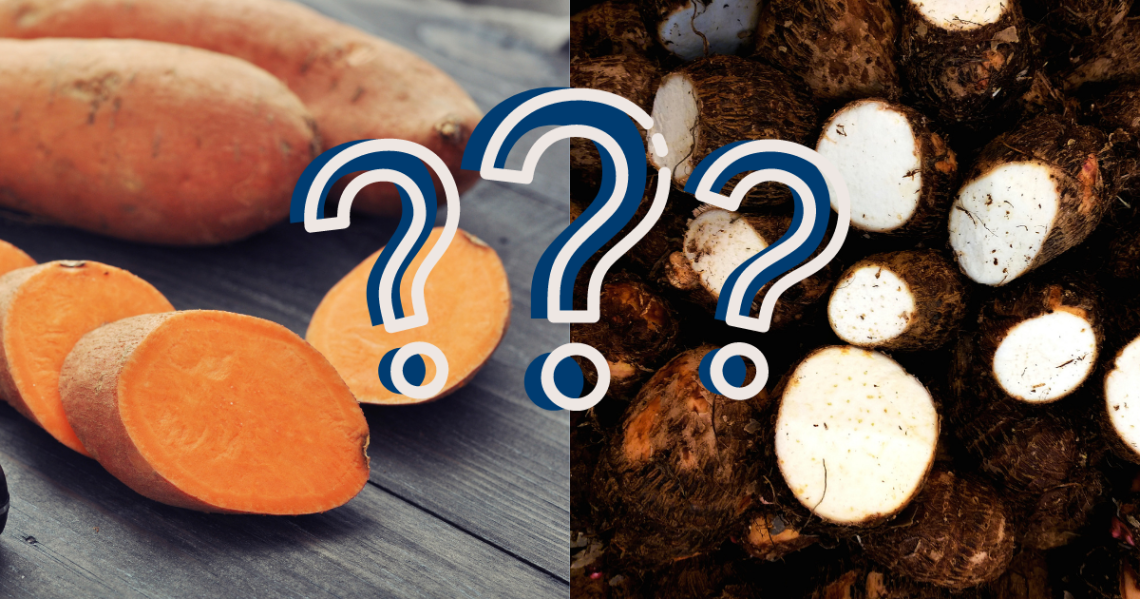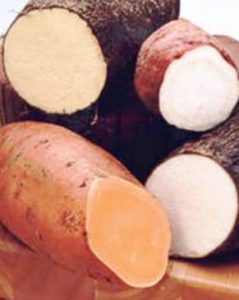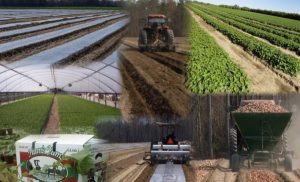Will Kornegay knows a lot about sweet potatoes. His family has grown them for years. And when I met him, he was repoing sweet potatoes hard online. Eventually I interviewed him to clear up some confusion and I thought it would be good to share the info here too!

Will Kornegay
Back when I chatted with Will, he worked for Ham Farms. He has since moved on to start and be CEO of Ripe Revival, a company that is helping to solve the problems of food waste and hunger. And because he lives in a part of North Carolina where sweet potatoes are grown, he still catches up with lots of sweet potato farmers.
Now I LOVE sweet potatoes. Seriously, have you had sweet potato tots? And you can never go wrong with some sweet potato fries. I also think a baked sweet potato is something to get all excited about. And I remember with a big smile the day each year when a truck would deliver sweet potatoes to our office from a customer in Louisiana. So I had to find a way to sit down and chat with Will.
My Q&A with Will
Why do people get sweet potatoes & yams confused? What are the differences & the similarities?
What is marketed in the United States as “yams” are really a variety of sweet potato, grown in the South. A true yam is a starchy edible root of the Dioscorea genus, and is generally imported to America from the Caribbean. It is rough and scaly and very low in beta carotene.
Yams? Sweet Potatoes? Can you tell?
“Yams,” as the industry and general public perceives them, are actually sweet potatoes with a vivid orange color and a soft moist consistency when cooked. They tend to have a sweeter flavor. Other varieties of sweet potatoes are lighter skinned and have a firmer, drier texture when cooked. Sweet potatoes are smooth with skins that can vary in color, depending on the variety, from pale yellow to deep purple to vivid orange. Flesh colors can range from light yellow to pink, red, purple or orange.
So where did all of the confusion come from? Many years ago when orange flesh sweet potatoes were introduced into the southern United States, producers and shippers desired to distinguish them from the more traditional white flesh types. Many newcomers to America saw the sweet potatoes and referred to them as yams due to the similarities that were seen from between the sweet potatoes and their native “yam”. The African word “nyami” referring to the starchy, edible root of the Dioscorea genus of plants was adopted in its English form, “yam”.
Yams in the United States are actually sweet potatoes with relatively moist texture and orange flesh. Although the terms are generally used interchangeably, the US Department of Agriculture requires that the label “yam” always be accompanied by “sweet potato.”
If you want to see if you can get this down right, you can take the sweet potato or yam quiz!
Are they grown in similar geographies?
Sweet potatoes and yams are grown in different geographies. Yams grow in tropical climates, primarily in South America, Africa, and the Caribbean. Sweet potatoes can be grown where there is a long frost-free period with warm temperatures in the growing season. Most cultivars require a minimum frost-free period of 100-125 days, with a minimum average daily temperature of 77 degrees. Sweet potatoes also require almost an inch of water per week uniformly distributed throughout the growing season for highest yields. These conditions are primarily found in the southern US.
Since the crop is grown in several southern states, what makes those areas similar? What kind of soils are best, the type of season that is best, etc.?
Farming Sweet Potatoes
Sweet potatoes are grown primarily in the southern US because the conditions of the climate and the lands geographical makeup are somewhat similar. Sweet potatoes are grown in sandy, loamy soils, and the season is dependent on the climate conditions mentioned above. In each of these regions, there is one growing season each year. Sweet potatoes are a storage crop, which means that they are grown, harvested, and stored throughout the year. March – October is the average growing cycle for a crop of sweet potatoes from start to finish. They are then stored to be packed for production until the next crop is harvested.
Here’s how they do it at Ham Farms:
“Each year, our qualified staff soil sample every field during the winter months. This will allow us to make proper fertilization decisions for the upcoming crop.
As a NC Certified Seed Producer, Ham Farms cultivates micropropgated, elite plants in our greenhouses. These plants are transplanted into our fields and roots harvested will become seed stock for the following year’s crop. Using certified seed will ensure a healthy, disease-free crop that is more uniform.
In early March, our seed stock will be bedded in the field. These beds will produce our sprouts or slips for transplanting in May. Precision transplanters are used for planting, to ensure slips are spaced uniformly in rows. Transplanting will usually conclude before the end of June.
Our staff will work diligently after transplant to ensure that fields are cultivated regularly in order to control the emergence of weeds. Sampling of fields and harvest planning will begin in July, as roots will have grown to a marketable size within 90 to 120 days.
During harvest, field rows are turned up using a modified disk which uncovers the sweet potatoes. Roots are hand harvested and graded in the fields. The roots are then transferred into bulk containers and transported to one of our controlled atmosphere storage facilities for curing.
The curing process takes between 4 to 7 days. Curing heals cuts and reduces decay and shrinkage in storage because it allows the periderm to thicken and to reform. Curing also converts some starches to sugars, enhancing the sweet potatoes’ natural flavor.”
What do you rotate sweet potatoes with?
We rotate our sweet potatoes with several crops, mainly soybeans, wheat, cotton, cabbage, peppers, and other the vegetable crops that we grow.
Do most farmers plant different crops?
Farmers choose to plant the crops they plant for many different reasons. Most farmers plant multiple crops. Crop rotation is a major motivating factor. Many farmers will choose to specialize in growing a crop or a few specific crops, and will use other crops to aid in their crop rotation.
For most crops you can see the crop mature, that doesn’t seem as easy with tubers, how do you know sweet potatoes are ready to be harvested?
How do you know when sweet potatoes are ready for harvest? You sample them!
This is done by field testing. Provided that growing conditions and climate have cooperated; sweet potatoes are mature between 90-120 days. Once the crop hits 90 days, our farm managers will turn up hills as a sample to see what the condition of the crop is. Random sampling will give a good idea of each field’s makeup, size profile, and readiness for harvesting. Once they crop appears to be ready the harvest plan is put into action. Ham Farms grows over 8,000 acres of sweet potatoes. Strategy and planning play a very large role in the planting/harvesting process.
What’s your favorite way to have sweet potatoes? Any recipe or cooking tips you want to offer?
Personally, I like sweet potatoes cut up and grilled as fries. You can also check out a bunch of recipes on the North Carolina Sweet Potatoes website.
For More on Sweet Potatoes and Yams
Farmers like Will have been so helpful in getting grounded on things! I’ve got even more on sweet potatoes from another friend of mine, Todd O’Neal, who told me all about his sweet potato farm in Louisiana on the podcast! We chatted as a part of my holiday foods series back in 2020, but I love sweet potatoes so much that I don’t just consign them to the holidays. They’re great year round!






